Fringe visibility and correlation in Mach–Zehnder interferometer with an asymmetric beam splitter
Yan-Jun Liu(刘彦军) Mei-Ya Wang(王美亚) Zhong-Cheng Xiang(相忠诚) and Hai-Bin Wu(吴海滨)
1College of Physics,Mechanical and Electronical College,Shijiazhuang University,Shijiazhuang 050035,China
2Institute of Physics,Chinese Academy of Sciences,Beijing 100190,China
We study the wave–particle duality in a general Mach–Zehnder interferometer with an asymmetric beam splitter from the viewpoint of quantum information theory. The correlations(including the classical correlation and the quantum correlation) between the particle and the which-path detector are derived when they are in pure state or mixed state at the output of Mach–Zehnder interferometer. It is found that the fringe visibility and the correlations are effected by the asymmetric beam splitter and the input state of the particle. The complementary relations between the fringe visibility and the correlations are also presented.
Keywords: wave–particle duality,fringe visibility,correlation,general Mach–Zehnder interferometer
1. Introduction
A single quantum system has mutually exclusive properties, and these characteristics can be converted to each other depending on the method of observation, which is known as Bohr’s complementarity principle.[1]The well-known example of the complementarity principle is wave–particle duality. A two-path interferometer, such as Young’s doubleslit or Mach–Zehnder interferometer (MZI), is used to quantify the wave–particle duality. The wave–like property and the particle-like property are shown by the fringe visibility and the which-path information (WPI) of the interferometer,respectively.[2–5]If the path of the particle is known accurately, the fringe visibility will disappear. The more WPI is obtained,the less the fringe visibility is. Recently,there have also been new advances of complementarity in experiments.QIet al.[6]experimentally constructed a weak-measurement MZI setup and performed a single-photon experiment with this new interferometer to test the wave–particle duality of photons. Yoonet al.[7]have proved that the experimental scheme using two stimulated parametric down-conversion processes is an ideal tool for investigating and understanding wave–particle duality and Bohr’s complementarity quantitatively. Wanget al.[8]experimentally verified the duality relation between coherence and path information to the quantum case and revealed the effect of quantum superposition on the duality relation. Pozzobomet al.[9]performed experimental tests of these complementarity relations applied to a particular class of one-qubit quantum states and also for random quantum states of one, two, and three qubits. Dieguezet al.[10]predicted the existence of hybrid elements of reality interpolating between wave and particle by a quantum controlled device. The complementarity between the fringe visibility and the which-path knowledge has been studied greatly in the symmetric MZI (both beam splitters are symmetrical) in theory and experiment.[11–19]In addition, the complementary relationship in a general MZI with an asymmetric beam splitter(BS)has also attracted great attention.[20–29]
Originally,the uncertainty principle was attributed to the absence of interference fringe.Ever since the proposal that the entanglement is responsible for the loss of interference,[30]a detector is introduced to the MZI,which is capable of making the path taken by the interfering particle and called the whichpath detector(WPD).The WPI is obtained by reading the state of the WPD.Although quantum entanglement is the great interest to quantum mechanics and the great importance to quantum information processing,it cannot explain all non-classical correlation,[31–33]which is called quantum correlation (QC).QC is more general and more fundamental than entanglement.Thus, it is reasonable to believe that not quantum entanglement but QC is responsible for the loss of interference. Liuet al.[18]have found that the correlation can quantify the particlelike property and obtained the relationship of the fringe visibility and the correlation in a symmetric MZI,but no one has studied the relationship between the correlation and the fringe visibility in a general MZI with an asymmetric BS.In this paper,we study both the wave-like property and the particle-like property in a general MZI with an asymmetric BS from the viewpoint of quantum information theory. The fringe visibility and the classical correlation (CC) or the QC are used to quantify the wave-like behavior and the particle-like behavior,respectively. The CC and the QC are calculated with either pure state or mixed state at the output of MZI.Here,the quantum discord (QD) is used to represent the QC.[33]It is found that the fringe visibility and the correlations are effected by the asymmetric BS and the input state of the particle. The trade-off between the fringe visibility and the CC(QD)is also presented.
The paper is organized as follows. In Section 2, we present the MZI with an asymmetric BS, and the state of the particle and the WPD. In Section 3, we investigate the CC or QD of pure state and mixed state after the particle leaves the asymmetry MZI.The complementary relationships of the fringe visibility and the correlations are also presented.In Section 4,we made our conclusion.
2. Setups and state evolution
A general MZI consists of two BSs and two phase shifters(PSs) as shown in Fig. 1. The incident particles are split into two paths by the symmetrical beam splitter BS1.Orthogonal normalized states|a〉and|b〉are used to denote two possible paths, which support a two-dimensional Hilbert space. When the particles propagate in these two paths, PS1 and PS2 perform an rotation

which is equivalent to performing a rotation around theyaxis by angleβ. The BS2 is symmetrical whenβ=π/2.
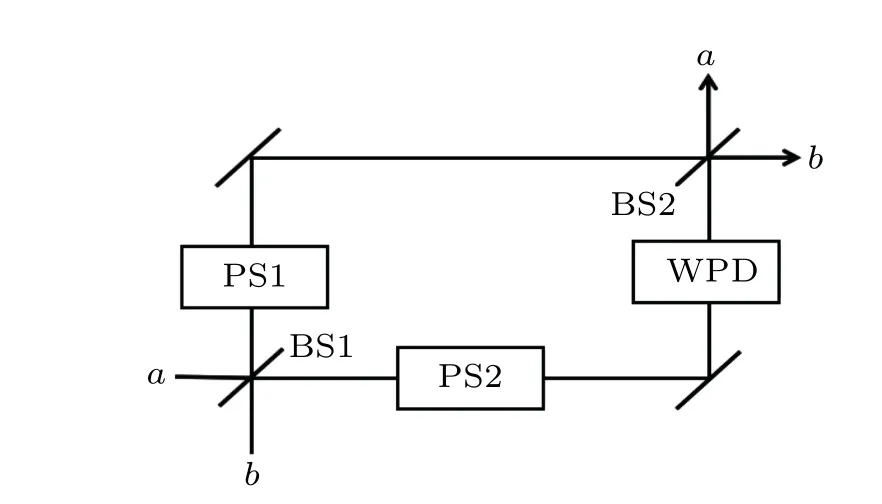
Fig. 1. The schematic sketch of the general Mach–Zehnder interferometer with the second BS asymmetry,a WPD is placed in path a.

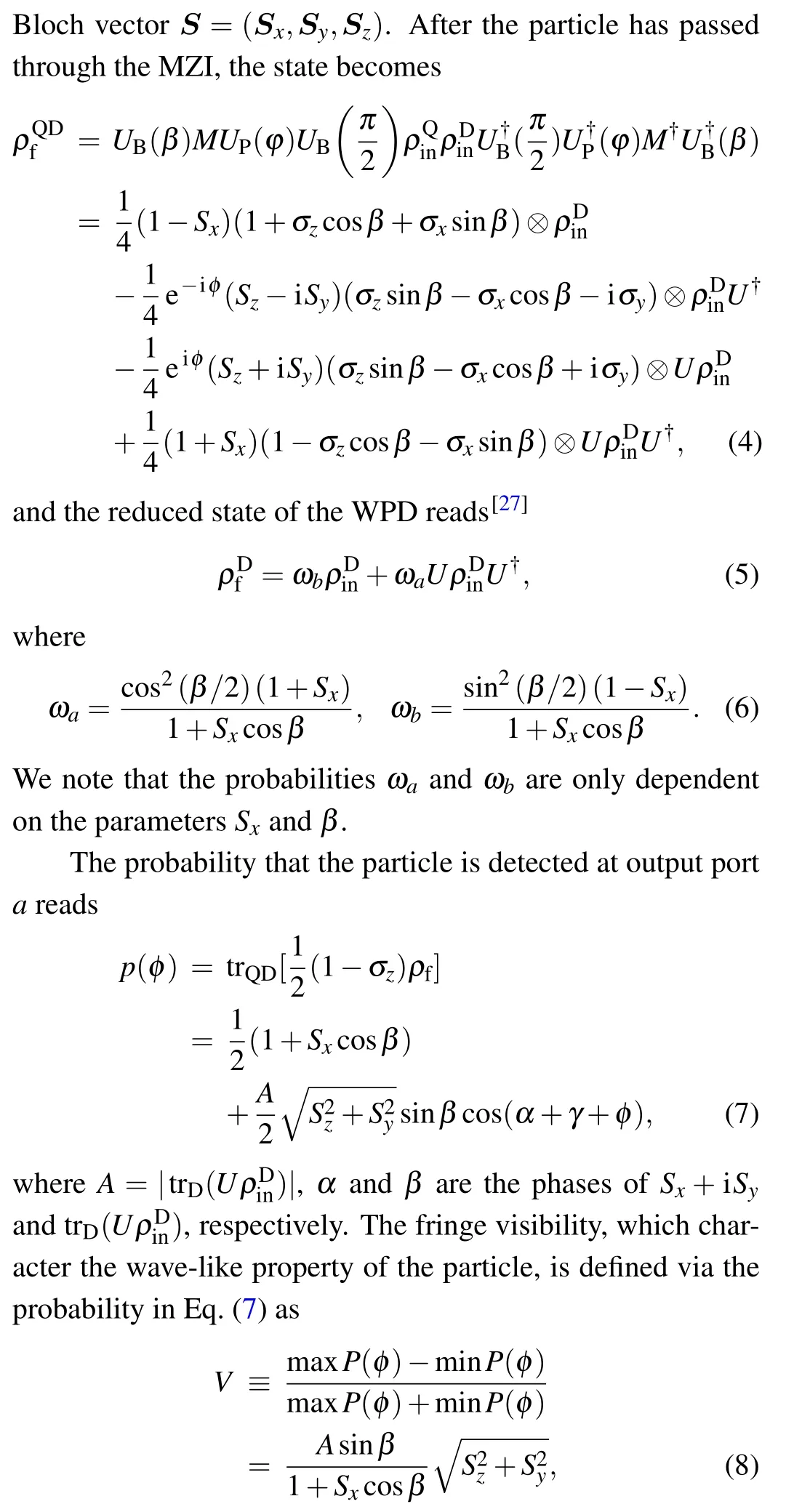
where the maximum and minimum are achieved by adjustingφ. We note that the expression of the fringe visibility measured in either output portaorbis different in an asymmetric MZI, however, the maximum of the fringe visibility remains the same no matter which port the particle is detected. The fringe visibility obtains the maximumAwhen the particle initially is in pure state and cosβ=-Sx.[27]
3. Information gain via general MZI

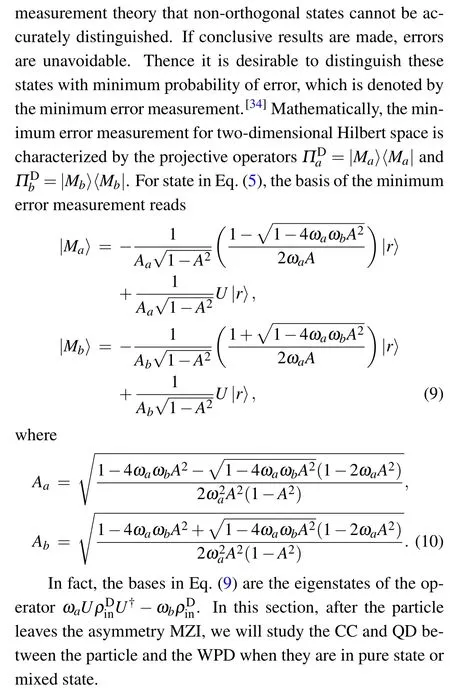
3.1. CC via general MZI
In quantum information theory, the CC[35]between the particle and the WPD can be expressed as
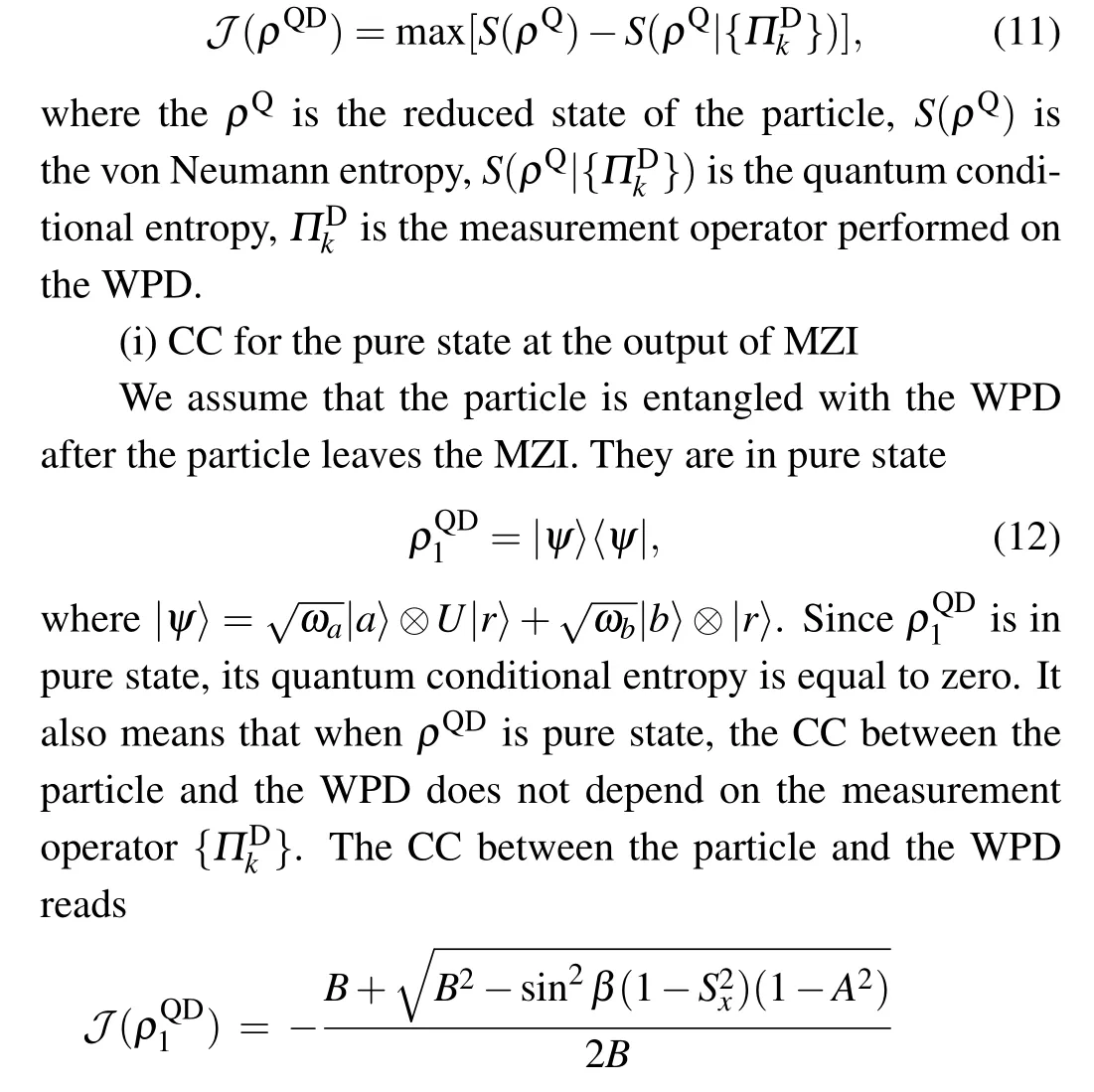
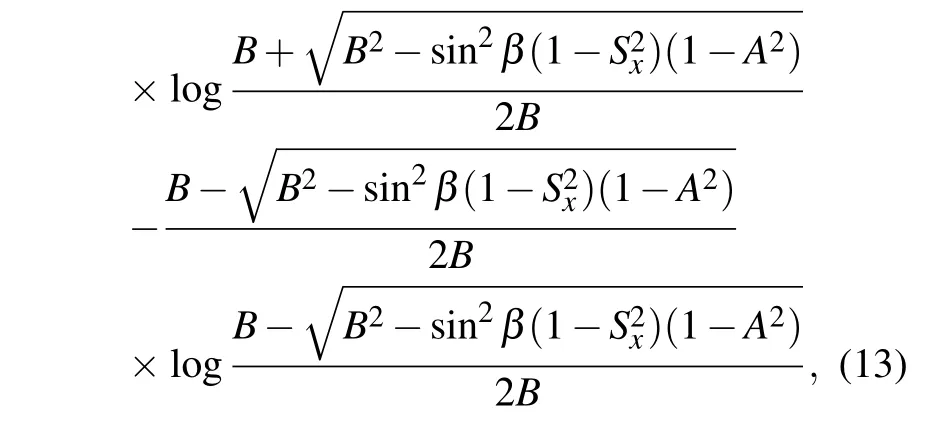
whereB=1+Sxcosβ.
(ii)CC for the mixed state at the output of MZI
The state of the WPD and the particle is always in a superposition state due to the entanglement between them.A observer must subjectively select the state of the WPD and then read it out to obtain the WPI.In order to avoid the subjective selection, Zurek proposed “environment-induced superselection rules”,[36]which is equivalent to introducing the environment into the original system. We can obtain the state of the particle and the WPD


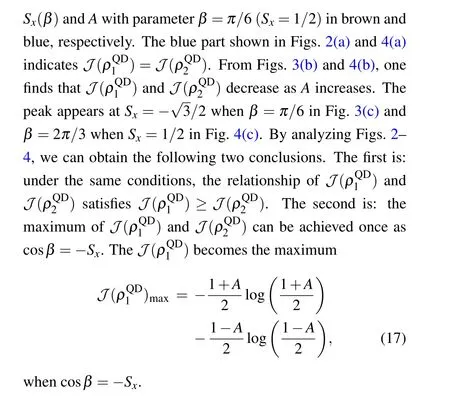

Fig.2. (a)The CC J(and J()as functions of Sx and β with A=1/3 are represented in brown and blue,respectively. (b)The cross section of the three-dimensional(3D)surface for β =π/3,π/2,2π/3,(c)the cross section of the 3D surface for Sx=-/2,0,2.

Fig.3. (a)The CC J()and J()as functions of A and Sx with β =π/6 are represented in brown and blue,respectively. (b)The cross section of the 3D surface for Sx=-1/2,0,1/2,(c)the cross section of the 3D surface for A=1/3,2/3,3/4.

Fig.4. (a)The CC J()and J()as functions of A and β with Sx=1/2 are represented in brown and blue,respectively. (b)The cross section of the 3D surface for β =π/3,π/2,2π/3,(c)the cross section of the 3D surface for A=1/3,2/3,3/4.

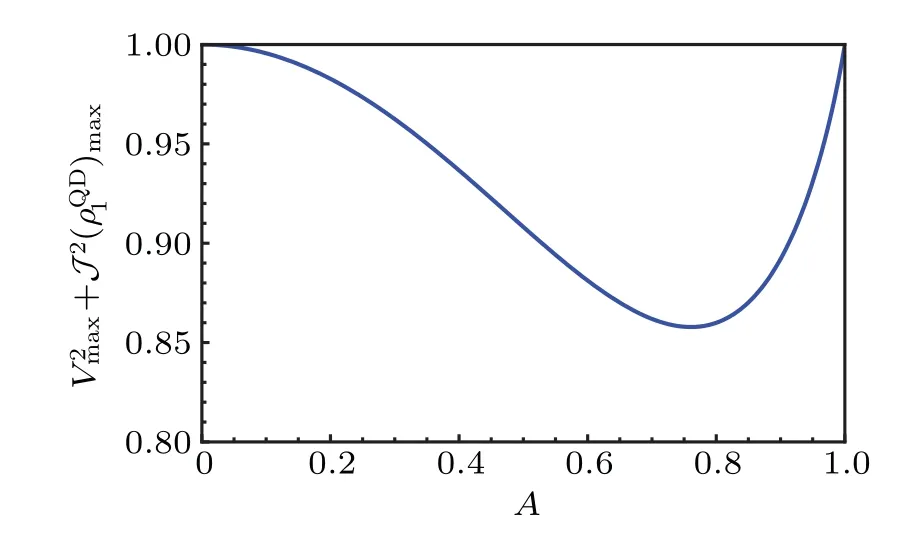
Fig.5. The relationship between J2()max+ and A.
3.2. QD via general MZI
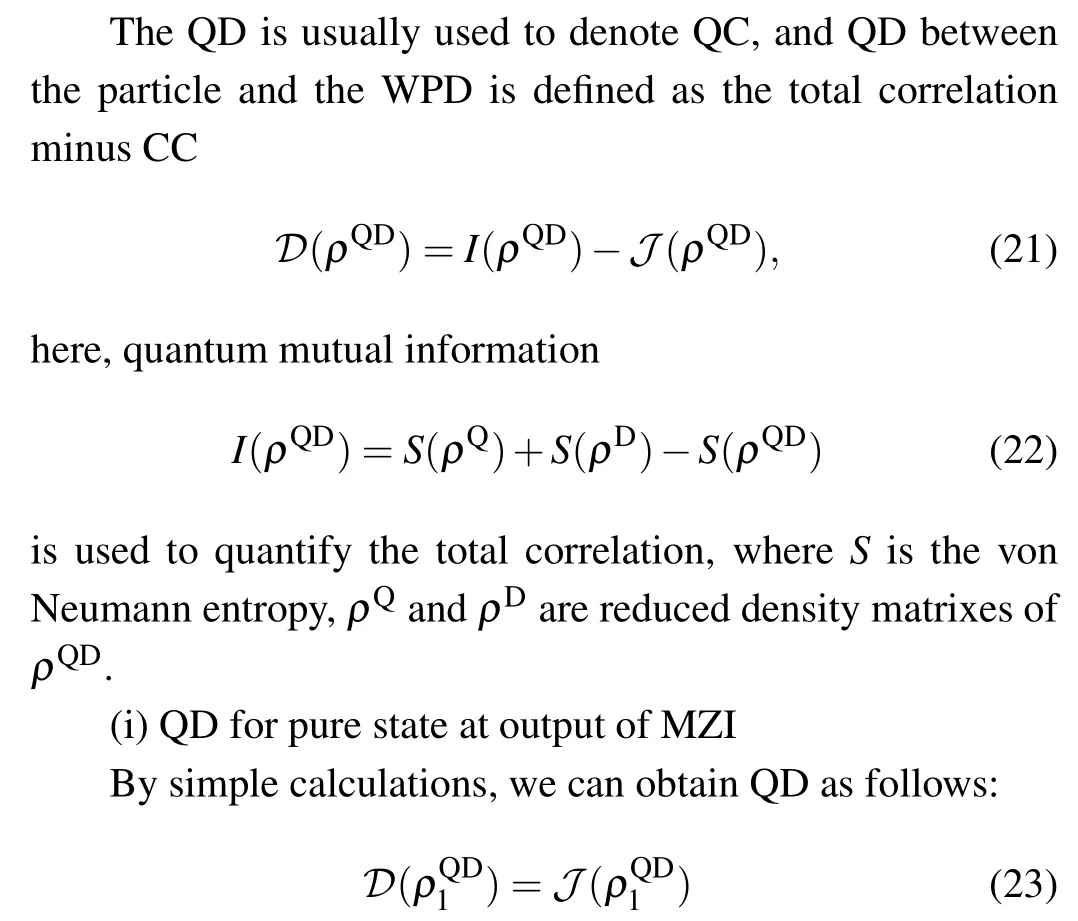

4. Conclusion
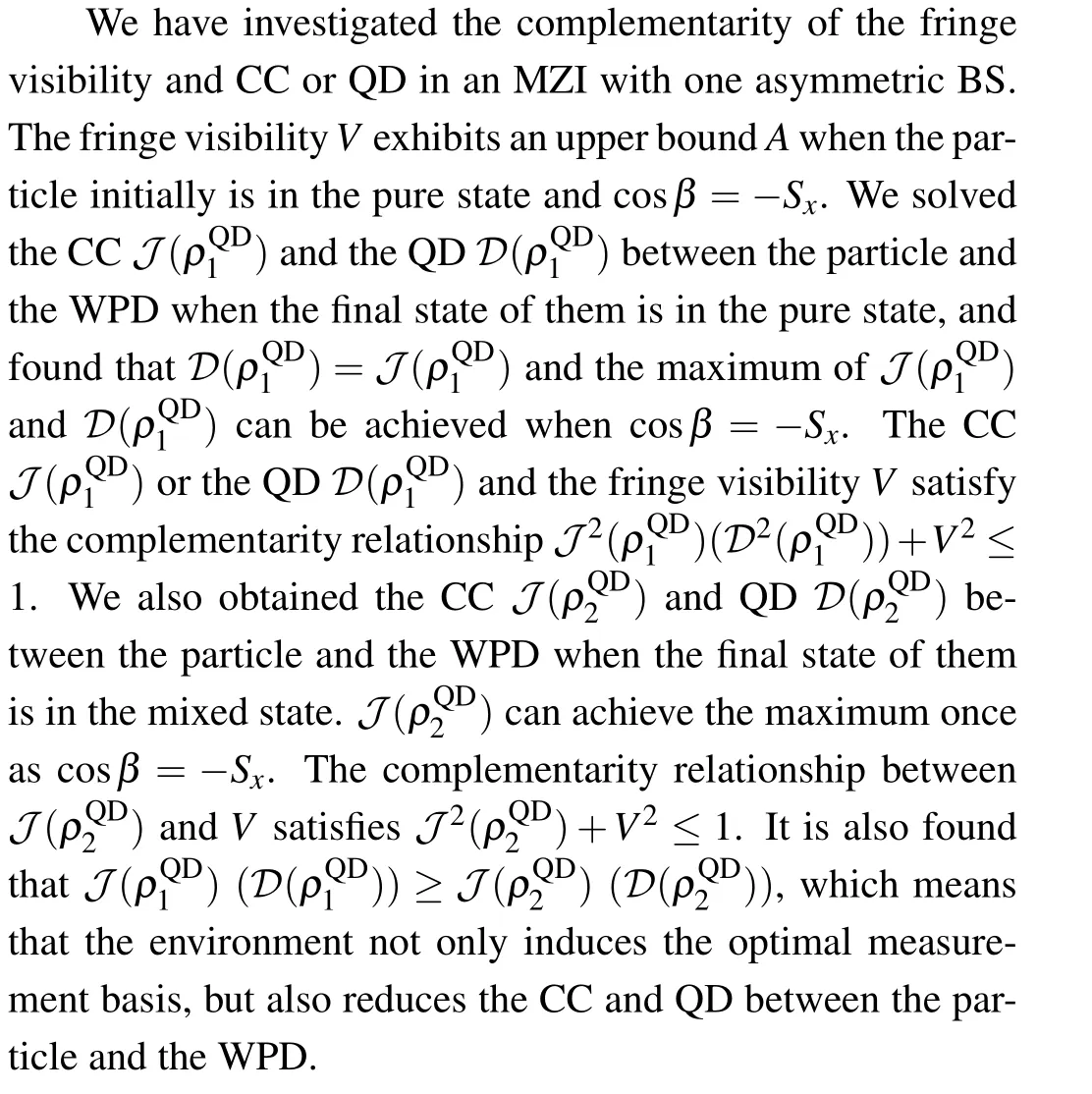
Acknowledgements
Project supported by the National Natural Science Foundation of China (Grant No. 11975095), the Natural Science Foundation of Hebei Province, China (Grant No.A2022106001)and Shijiazhuang University Doctoral Scientific Research Startup Fund Project(Grant No.20BS023).
- Chinese Physics B的其它文章
- A design of resonant cavity with an improved coupling-adjusting mechanism for the W-band EPR spectrometer
- Photoreflectance system based on vacuum ultraviolet laser at 177.3 nm
- Topological photonic states in gyromagnetic photonic crystals:Physics,properties,and applications
- Structure of continuous matrix product operator for transverse field Ising model: An analytic and numerical study
- Riemann–Hilbert approach and N double-pole solutions for a nonlinear Schr¨odinger-type equation
- Diffusion dynamics in branched spherical structure

